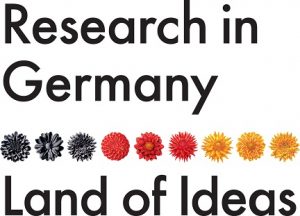
Superconductivity and giant magnetoresistance are examples of phenomena that can occur in some materials or systems driven by the so-called electronic correlation, in which the behavior of an electron is strongly influenced by the behavior of other electrons of the same system.
At one of the Max Plank Institutes, located in Stuttgart, Germany, a group of researchers led by Professor Bernhard Keimer works hard to understand and control the behavior of correlated electrons. For this, the team produces heterostructures (structures composed of several materials with differentiated characteristics) of metallic oxides, and characterizes them using a series of experimental techniques, mainly of spectroscopy.
Professor Keimer will be at the XVII B-MRS Meeting in September talking about this research program in the lecture “Spectroscopy of collective excitations in oxide heterostructures”. In his plenary talk, Keimer will present methods and results, including some possibilities of controlling correlated-electrons phenomena.
Bernhard Keimer has been director of the Max Planck Institute for Solid State Research as well as honorary professor at the University of Stuttgart since 1998. From 1992 to 1998, he was Professor of Physics at Princeton University. He graduated in Physics from the Technical University of Munich in 1985 and, in 1991, obtained his PhD in Physics from the Massachusetts Institute of Technology (MIT), where he remained for one year as a postdoc. According to Google Scholar, Keimer has an H index of 86 and his scientific production has more than 24,500 citations.
See our mini interview with this German scientist.
B-MRS Newsletter: – One of the goals of the research you perform with your team at the Max Plank Institute is to control the behavior of strongly correlated electrons, right? In your opinion, what could be the most promising applications emerging from this control? Comment shortly, please.
Bernhard Keimer: – Quantum correlations between electrons generate a large variety of electronic ordering phenomena with vastly different macroscopic properties. Understanding and controlling the collective behavior of electrons in “quantum materials” is a grand intellectual challenge for fundamental research. In the long term, research on quantum materials might enable the design of a new generation of devices based on electrons flow with minimal – or even zero – dissipation.
B-MRS Newsletter: – We want to know more about your work. Please choose a paper of your own (your favorite one) related to the subject of the plenary lecture and briefly describe it, as well as share the reference.
Bernhard Keimer: – As a general introduction to the physics of quantum materials, I recommend a recent review article (B. Keimer & J.E. Moore, Nature Physics 13, 1045 (2017)) A particularly fascinating topic is high-temperature superconductivity. My group uses heterostructures and superlattices to investigate novel collective phenomena emerging at the interface between high-temperature superconductors and other quantum materials. As an example, the figure below shows a kaleidoscope of quantum phases in a 50 nm thin layer of a copper oxide superconductor sandwiched between two layers of an oxide ferromagnet (A. Frano et al., Nature Materials 15, 831 (2016)). My group is developing spectroscopic methods that allow visualization of these phases in a depth-resolved manner.

For more information on this speaker and the plenary talk he will deliver at the XVII B-MRS Meeting, click on the speaker’s photo and the title of the speech here https://www.sbpmat.org.br/17encontro/home/

